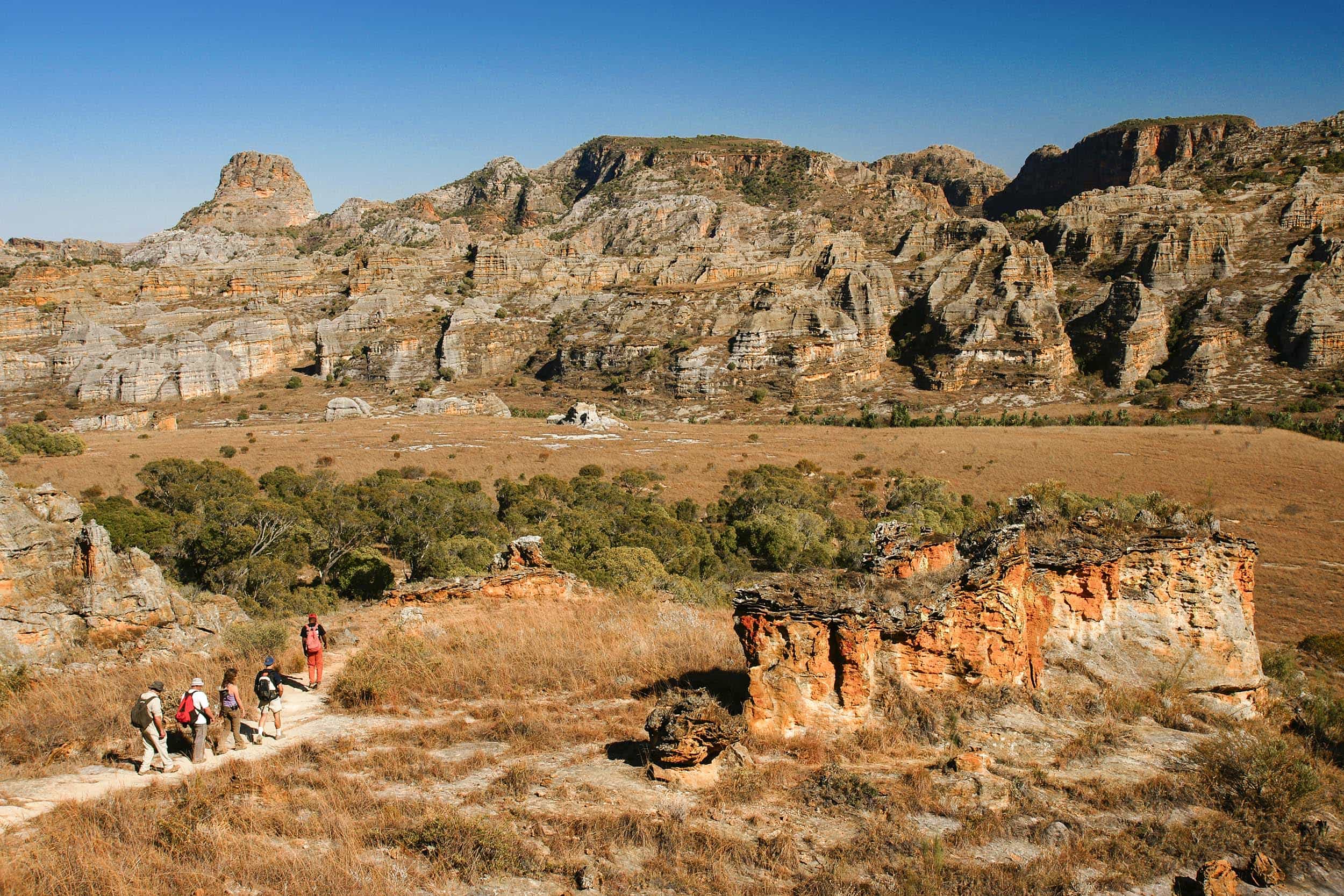The Isalo National Park is one of the most famous in the country, and has a variety of landscapes that make it a unique enclave.
Isalo National Park is located in the southern part of Madagascar, next to the small town of Ranohira. The park covers an area of 81,540 hectares and should be visited on foot.
It was created in 1962 and was the first park created after the country’s independence. It is considered to be the second oldest national park on the island, after Ambre Mountain in northern Madagascar, which was created in colonial times.
The entire extension of Isalo can be considered a true sanctuary for the island’s endemic flora and fauna species.
The biological diversity of the Isalo, coupled with its spectacular scenery, make it a must-see for all travelers visiting southern Madagascar. This ruiniform massif is formed by Jurassic-age continental stoneware. The most visited park in the country has deep canyons where water flows in the form of streams, Bara tombs, caves where the Portuguese and Arabs used to hide, this park is a living testimony of the history of Madagascar.
The Isalo massif is located in the region of the Bara ethnic group, skilled cattle breeders and famous for their animist traditions that include the stealing of prenuptial cattle and various initiation ceremonies for young people.
But the park is much more than landscape. Very well known by specialists are its varied and endemic species of fauna and flora. Isalo is a real natural zoo where several species of lemurs can be found: the lemur Catta Linnaeusthe Eulemur Fulvus Rufusthe Eulemur Rufitrons… In any case, the most difficult to observe (and also the most coveted by the photographic equipment of travelers) is the Propithecus Verreauxi Verreauxi (Sifaka-Bilany) or “upright walking lemur”.
The 77 species of birds are spread throughout the Isalo geography, and 70% are endemic to Madagascar, such as the Lophotibis Cristata (seriously endangered species) Pseudocosyphus Bensoni, Buteo Brachypterus, Polyboroides radiatus, the Upupa Eopos, the Falco Newtoni, the Vanga Curvirostris, the Dicrurus Forficatus, the Cua Tristata and can be observed from different points of the Isalo between the months of October and December (the best time for bird watching).
More than 400 varieties of flora, including Bismarkia nobilis (endemic palm of Isalo), aloes isaloensis, pachypodiums rosulatum, Dipsis Onilahensis, Kalanchoes tormentosas, euphorbeas, ichnolepsis tuberosa, menabea venenata, catharantus ovalis……
Isalo is the most visited national park on the island, and a must on any trip to southern Madagascar.
Source ©Indigo Be Magazine












